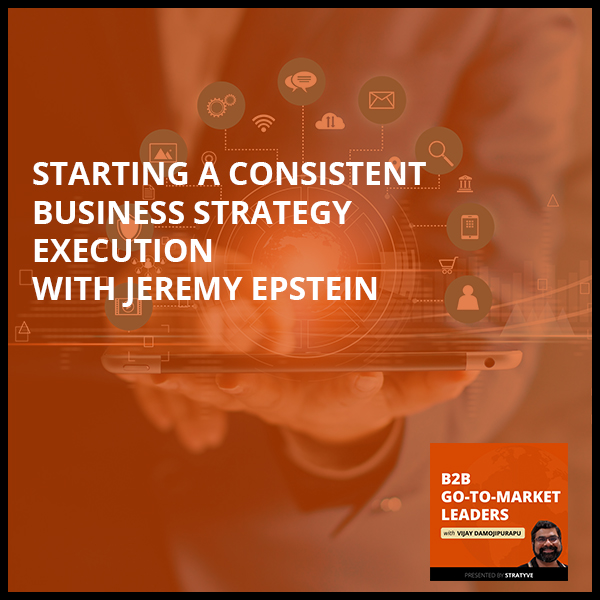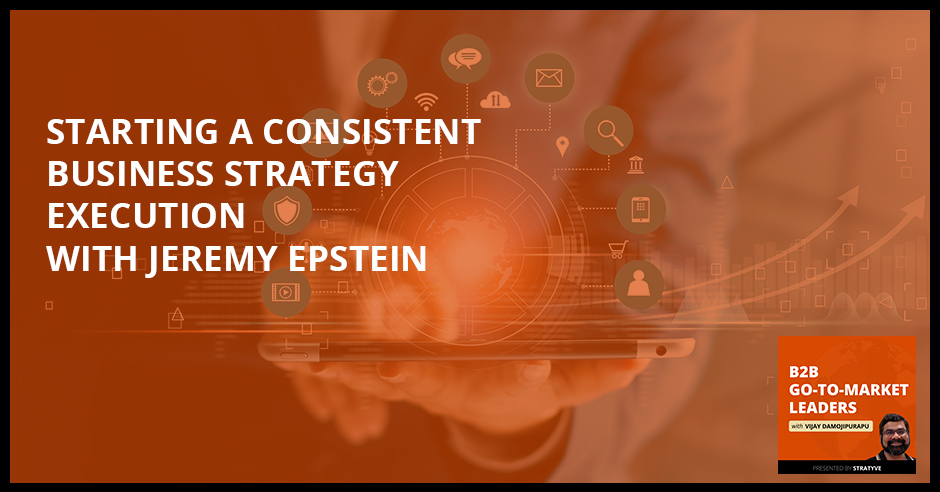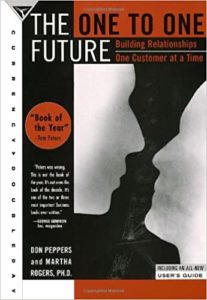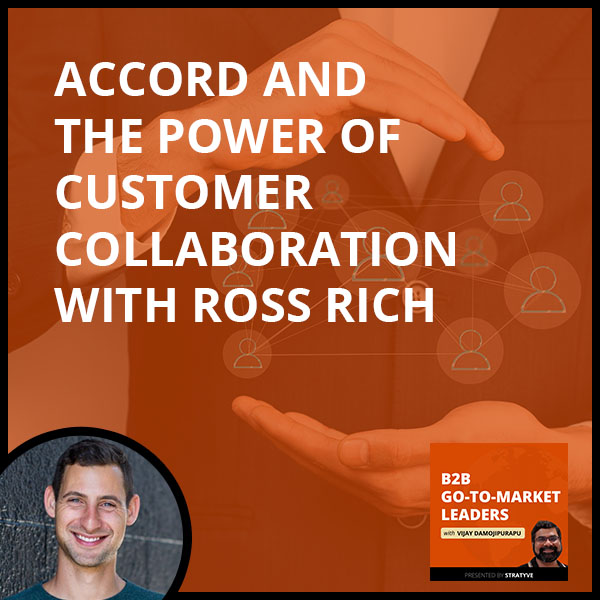
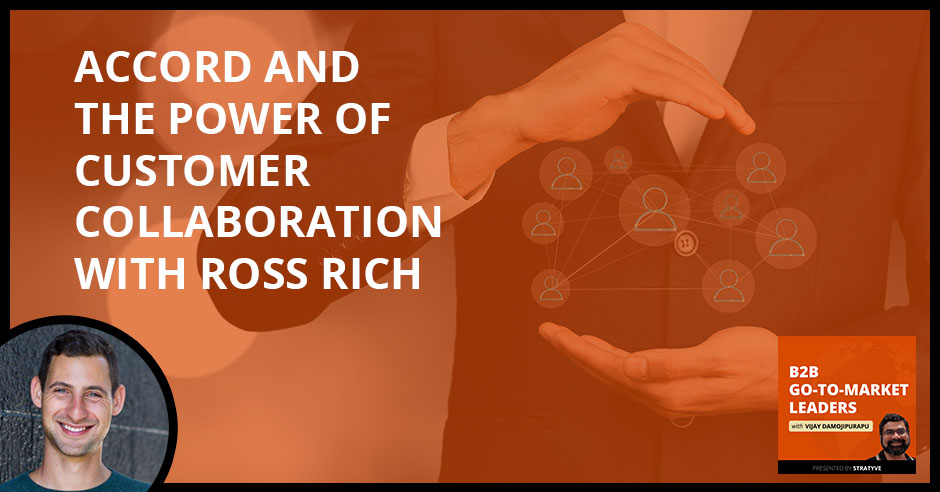
Collaboration inside your team is expected in any thriving business. But what if you can extend that collaboration to your customers? When it comes to go-to-market sales, having a transparent collaboration with the buyer and the seller is a lifesaver. That is what Accord is doing. Vijay Damojipurapu talks about this with the CEO and co-founder of Accord, Ross Rich. Learn how Ross built a go-to-market playbook for his team and how he started Accord. Learn the challenges of building something new in the market and how to get market validation. Discover more about go-to-market sales and Accord today!
—
Listen to the podcast here
Accord And The Power Of Customer Collaboration With Ross Rich
I have with me Ross Rich, who is the Founder and CEO of Accord, Y Combinator Alum and in the go-to-market, MarTech, sales tech, customer support, customer success tech, and tech stack, depending on which lens you want to put on. That’s one of my favorite areas, which is the whole GTM tech stack. I’m super excited about your story, Ross. I’m sure we’ll dive a lot more, first of all, a very warm welcome to the show.

Thank you for having me. I’m excited to dive in.
Again, I always start off with the signature question with all my guests because I want to deliver value to my audience first, which is how do you define go-to-market?
I was thinking about this before and it’s a tough question because it’s so much of a company now, especially if you have the product by growth. I think there are two answers. If you have your sales and marketing team and they sell someone, then they go into the product. I’d define it as the sales and marketing side.
As soon as you bridge both of those in and you think about retention and NRR and all of those great things, it’s the whole company outside of the R&D side of things. It’s a startup. It’s your entire company. If you have part of your product, that’s driving growth, which almost is true with any company now. It has to do with your retention and customer success. That’s how I like to think about it.
Especially for the PLG-focused companies like yours, you think about the product first, but then very quickly and importantly, you need to pivot to the customer and the user. Even for PLG strategy-focused companies, it depends. You need to focus on how do you quickly deliver value to your user first up. It’s user-focused. Buyer focused as well and how do you deliver. Hopefully, you get to a vitality effect and I repeat usability. All of this, again, comes back to that buyer and the user, knowing that person, he or her very well.
That’s part of your go-to-market. It’s the product of building everything.
It’s a huge part of the go-to-market. That is one core component. Again, I’ve listened to quite a few podcasts. I was listening to another podcast where it was the Founder and CEO of I think the company was Intellimize. His focus was all balling down to customer focus. The go-to-market strategy is sales lead but in your case, it’s a product lead go-to-market strategy. Would you agree with that?
The process is a bit of a mix. For Accord, in particular, it’s not self-serve freemium in terms of like, “You can go on. You get to set up and we’ll ring you up if you get past a certain limit like a Loom, Figma or something like that.” You get a free trial. You can play around. You can use the product before you decide to buy, which feels about right.
In 2021, the new company was starting out but you’re guided, assisted by an expert in the space that’s like, hopefully, a consultant and giving you best practices and what we’ve been learning to make you even more successful. It’s a mix of salespeople. It’s super helpful but that’s not how buyers want to buy. They don’t want to be led by a salesperson alone. They want to be assisted. How do you bridge both the need for people to play around with the product and validate themselves but also get that expertise and advice from someone who knows what they’re talking about?
It’s almost like it’s a salesperson but with a very customer success mindset and customer success-oriented. I’m sure we’ll dive a lot more during this interview. Next step, can you tell our audience and share with all of us your personal, professional journey, your story and what led you to what you do now and who do you serve?
I’m originally from Toronto, Ontario, Canada. I was born and raised in Canada. I went to school on the Westcoast on Vancouver Island and I studied business. My dream job after starting school there was to be in the music industry. I was managing artists. My brother and I started our first company together that was putting on events and bringing in artists that were touring across Canada in the US, hosting fundraisers. We’re very involved in the music and entertainment industry. Somehow got my dream job after school at Columbia Records. Working with artists like Calvin Harris, Snoop Dogg, Omi, Pharrell, etc., on album releases and songs and tours and all this stuff. That was the dream.
I quickly learned that wasn’t for me, long-term. I found the culture of the industry, but sadly, I didn’t see myself working in this industry for more years after the first year. It’s a lot of egos and the way of working. It was very bureaucratic. Surprisingly for such a creative industry. I ended up finding a job in San Francisco. I moved there before I had the job.
I did about 40 interviews with recruiters, screenings, looked up as the top early-stage companies and wanted to be at a company where I was going to be one of the first salespeople. I was like looking at sub 25-50 people companies exclusively and somehow, I ended up at Stripe. I don’t know how luck, etc. It was 2015 and they started to hire business and salespeople.
The first years were purely self-serve, selling to tiny startups, founders, SMBs, etc., adding on a sales team and luckily ended up being one of those first hires. That’s what drew me into tech sales and this whole idea of building repeatable go-to-market engines and the love of the deal. I did that for about five years then founded Accord with my brother a few years ago. That’s what brought me here. A secure, very random path from Canadian University and putting on events and concerts there to Columbia Records in LA and New York to Stripe, APIs, payments, and FinTech to a sales technology platform with Accord. That’s been my personal journey so far.
Find a group of smart people and learn and optimize from them. Money will follow. Share on XFirst of all, you’ve done a pretty good job summarizing your entire career in 2 or 3 minutes, so kudos to you on that but it’s amazing. You start off with something in the music industry, which is very creative. Of course, you can draw the lines and connect the dots from the music industry to sales. I get that part but then, what led you to sales in tech?
You don’t have many options when you’re a few years at a school and the only experience was music and you want to be in the professional space. I was like, “I’m good at working with people,” all that stuff even before the company that I had in university and at Columbia Records. I was like, “Maybe a junior sales role would be a good foot in the door.” For what I wanted, the opposite, I wanted a fast-moving company in the early stage to be able to be part of the strategy, which seemed to be the tech world. That’s what led me to focus on tech. The real reason I joined Stripe over the 39 other companies I had interviewed with was the team that I met there.
I was like, “This group of people seem insanely overqualified.” They’re incredible senior people and super talented folks from Google, Twitter, and all these other earliest stage companies. I was like, “You guys are joining this small startup that I never heard of before and all that stuff and selling APIs and FinTech?” It wasn’t proven out at that time yet. I was like, “I need to be around this group of people.
I’m going to learn so much and it seems like a great time and opportunity to do this.” Within a few weeks, a couple of months, I was hooked. I’m like, “This is what I’m going to do for the next X number of years.” That’s what led me to join Stripe. It wasn’t as thoughtful as you think, I looked at the market, what’s going to be growing and fitting in tech, whatever APIs and the decentralization of all this stuff, I was like, “This is the most amazing group of people that I’ve spoken with and met with. This is the right shift to be on.”
For all our audience, I think the key takeaway, don’t overthink. There are 1 or 2 points that Ross mentioned. One is the group of people, team, smart people, a top tier, and the cream. Look at the opportunity of working with them, being with them, and learning as a team.
Optimized for learning. That’s what I optimized for and led me in the right direction.
Once you optimize for these tools, money will follow and that’s what led you to study your own. Prior to that, I think you applied for the Y Combinator.
We got into YC then we started the Accord.
Tell me a story around what got you into thinking around the pain point? You’ve been doing sales. You’ve done fantastically well for yourself but what was the transition and shift from being an employee, nothing wrong with that, in sales to, “There is a bigger problem I want to solve. I want to start a company around this?”
Honestly, it’s pretty organic starting Accord from my time at Stripe. There are two main things that I had on the top of my mind that I was very passionate about at Stripe. One was, going from being one of the first sales and business hires to a massive 400 global sit person sales team and doing the deals myself. From the team perspective, the challenge was always we’d break into a new market, new product, etc., how do you get everyone else that we’re going to bring on to understand what that motion looks like? We went through all the repetitions, all the loss deals, the learnings, the million conversations. How do you get that in that process to the rest of the folks? That was a big challenge.
I was one of the leading reps there and we’d work on the new segment or the new product. I found it so challenging. There was never a great solution. Testing out Google Docs, Confluence sheets, bringing in trainers or the classic old-school laminates and bringing in all that stuff. It’s never been an effective way for other folks to understand what the process should look like, what meetings you should have, what resources you should share when, what stakeholders you should loop in at different parts of the team, and what expectations you should be setting. These details make a difference that every new rap has to learn. That was one side of it. These building of go-to-market playbooks and how to effectively work with customers throughout the buyer journey.

The second one was the collaboration with customers. I’d hacked together this system that I built. This operating system of like shared slack channels and Google Docs and sheets and presentations and templates and emails. It was an effective way of being very transparent. I collaborated with my customers through all these shared workspaces, but it felt very like a one-off and across a lot of different things. It felt like there should be a solution, software for this, whether there is JIRA internally for a lot of the product teams.
There’s Figma for design and GitHub for engineering. Why is there something for such a collaborative organization which has sales? There’s nothing for that internally as well as externally with the customer. We’re combining both of those. The challenge of building this repeatable sales process as well as working with customers transparently birth the idea of Accord, which is a customer-facing collaboration platform for sales and onboarding.
There should be something that is templatized that everyone can use and customize from there. There should be something that is collaborative with customers. Again, it wasn’t like sitting in and how do I think it started ideas. I was like, “What am I doing? What are the challenges that I’ve run into? What do I think would be helpful for the next person in my position?”
I think the key point for all the audience is as much as you want to create your own company but that will not and should not be the driving force. You can have that in the back of your mind but unwind and let the problem percolate. Let that see thought grow into something bigger. That’s what I see in yours. It’s not that, “I’m at Stripe. I’m doing well.”
It’s not about arrogance that, “I’m the best in the world. I’m going to create a company.” It’s not that attitude at all versus there’s a playbook. There’s a bigger gap in the space, specifically around the sales organization and the buyers. Now, why is that more of a vendor buyer relationship versus a partner relationship?
That’s a good point. I think, similarly, I’d add like, what is your passion? That’s the thing you’re going to be most successful at. Say you do want to start a company and that’s the thing that you want to do next. It’s not going to be looking at the market. As an investor, I don’t think it’s going to be looking at it as a human and what you are most passionate about.
That’s the thing that you’re going to be most curious about and have a unique perspective on to solve problems for people than necessarily like, “This space is hot now. I could make a lot of money off this type of business model.” Everyone is thinking like that. That’s not going to be the unique next insight that you have as a person. It’s going to be from what you’re passionate about.
Look at your market not as an investor, but as a human. Your insight as a person is going to be from what you're passionate about. Share on XLet’s switch gears and more on the lighter side of things. You guys are unique in the sense. It’s you and your brother who started this company. It’s not that often and not that a common theme. How do your parents deal with that or tell others as to what you guys do?
I think my dad deeply understands this because he was an entrepreneur but a salesperson at heart. He made sales for fifteen years before starting his company. He works with clients every day and understands, although they didn’t have collaborative workspaces but the importance of building those relationships, collaboration, and transparency to create the best partnerships. How would they describe it? To most of their friends, they’d be like, “Our kids are doing some tech thing. A technology company that’s helping salespeople do stuff.”
I’m thinking of different ways we can go here. One is, how did you decide between you and your brother as to who will be the CEO and the CTO? Let’s go down that path. How did you guys figure that out?
It was pretty organic. When we were making music back in the day, I felt the natural roles. My brother is, I would say, much more creative than me. He was always doing the music production, the recording stuff, all those pieces and had more of a product and engineering mind than myself. I was more of the external marketing and all that stuff. When it came to starting Accord and we started working on it together, he naturally started to think about it like, “What is this thing going to look like?”
He’s designing it and thinking more about the product side. I feel like I was more of the like, “We have a hundred conversations with sales reps, CEOs, CROs, VPs of sales, etc., what their feedback is going to be?” It’s an organic partnership. He was starting to build out the wireframes, the mock-ups and prototypes. I was out there trying to understand the market. That developed pretty organically into I was the external Rich brother and he was the internal Rich brother in terms of working with the R&D team. I was out there talking to the first customers and recruiting. That’s how it pretty organically happened.
It is only you as the cofounders or did you have anyone else?
We have another cofounder. We wouldn’t be here without him, Wayne Pan. He’s our CTO. My brother is CPO. He is a multi-time founder, amazing engineer leader, led teams of up 30 to 40 engineer people. Also led product design engineering orgs. It’s like the whole R&D org, a very holistic perspective on that. Similar to what we were talking about, the go-to-market side on sales and marketing. He’s started a couple of other companies before. One that was invested in by Sequoia that sold to LinkedIn.
He’s been in a lot of ways the shepherd for us on our first founding journey, loves to build teams and the operating system of a company and that foundation, which I feel like a lot of times with younger, early first time CEOs like myself and my brother is some of the biggest complaints from employees and other stuff is like, “How do you do this? What is the foundation? What does the start of the week look like and the wrap-ups and the quarterly kickoffs and retros?” He’s super thoughtful about all of those pieces of the company, culture and team building, which has been super awesome to have.
I think that’s a core component, especially when you are building the team and doing fundraising early on. With one founder, it’s super tough. It’s not that it can’t be done. If you go onto the other extreme, which is 4, 5, cofounders, that’s a big no. Kudos to you and your brother for identifying someone who’s stronger on the product and the engineering side. Now, did you guys and Wayne work together earlier or how did you guys come to know each other?
It was crazy. It was an intro from one of our first pre-seed investors. He’s one of the first people that say, “Commit money to their crazy idea that was Accord.” Bob Ross was leading Stripe’s partnerships team when I met him. Both of their companies, at some point, were acquired by LinkedIn and happened to overlap there. When I asked Bob, “Whom do you know?” It was like, “I happened to catch up with Wayne. It was super random. We were having caught up in years and it was perfect timing.”
From the first conversation to decide to work together, it must have been single-digit business days for such a huge decision. It felt super right. I think personalities melded well and the vision of the culture and type of company we want to build. One of the first things that Wayne said when I was talking to him. I’m asking how he thought about the company building, etc. It was the quote from Steve Jobs around, “Hire smart people, get out of their way and empowering people.” It was like that. I feel like a few people live that and that’s the type of team we try to build.
Have you heard of this book or read this book, Think and Grow Rich by Napoleon Hill?
Of course.
I would be surprised if you said, “I don’t know that.” It’s almost like that but then something is strong. The universe conspires to make it happen. It’s exactly that. Enough of the loosey-goosey and gooey stuff.
We were talking about manifesting the company. It’s funny that you bring that up. We manifested it.
Let’s talk about Accord. Tell me about your product. Whom do you serve, how you build the business, where you guys are at now?

It’s super high-level to summarize. First, it was a customer-facing collaboration platform for B2B sales, onboarding and success. The core of it is if you’ve heard of mutual action plans before in sales, a shared plan of next steps, timelines, and milestones. We add in resources, team members, a summary of the deal to make it easy for everyone involved in both the buying and the selling side to understand what the deal is, very transparently setting the right expectations across the board. That’s the idea. We mainly work with high-growth startups.
We’re working with some seed and series a company all the way to the likes of Figma. We work with their enterprise sales team closely. Across the gamut, I would say that where we help companies most are in the high touch, multi-stakeholder, project management side of the deal when you have a lot of people coming in. Maybe it’s a product, engineering, design, and finance decision-makers. You need to keep everyone in the loop around pre-sales with maybe it’s risk or compliance or legal and all that stuff.
Post-sales is like, “What does it look like to roll this out across the company successfully? How do you build a repeatable motion around both of that pre-sales and onboarding?” Make sure there are smooth handoffs and setting the right expectation for your customer. That’s the area that we play in to start focusing on technology companies who are the early adopters of new tech like Accord.
I’m super excited about what you guys are doing. Think of it this way. You got collaborative platforms internally. Now, we are doing that for an external audience that’s specifically for sales and buyers.
Everyone knows how helpful Asana is and Monday.com and Click. All of these things have been wildly successful notions for years but there’s nothing that’s built to work externally with partners, customers, buyers, and all that stuff.
Talk to us about the go-to-market. You did mention high-growth scale-up startups. Are you looking at geographies? Are you looking at what tickles and what is the go-to-market motion like?
It’s been evolving. The thing that I was familiar with was more of a top-down, mid-market, and upper mid-market enterprise deal from my time at Stripe. I know at the end of it, I was working on 1 or 2 deals across months. I knew that motion and made sense for something like Stripe because you’re ripping out your entire revenue engine and you’re putting in Stripes.
For deals like that, it’s not like you’re going to do 5% of your payments. All the work gets done and you shift over, which is very different from something like Accord, where you could have a sales rep or a manager bring this in a small part of the organization and test out on one deal or one segment and all that stuff.
I’ve had to learn a lot about product-led growth and understanding how our buyers want to buy. It’s been super organic in terms of how we’ve thought about and matured our go-to-market motion. To start, it was me talking to anyone in my network about this idea and the curious conversations turn into your first users. That’s how it started with the first 5 to 10 users. It’s talking to people and asking for friends of friends who would be interested in this.
It is similar to fundraising. It’s the same thing with the customers, friends, and family first, then go wider.
It started there and when we started getting into the public and beyond that network was February 2020. It’s when we did our seed raise announcement, which went on TechCrunch and got a great reach there. It was interesting because we first moved from us going to certain people and our assumptions to what is going to come back from the market. You send it out into the world.
Who are the people that this is going to resonate with? It was interesting because it wasn’t only the people, sales leaders, VPs of sales, and CEOs. It was a lot of sales reps, managers, and even smaller seed series A-company mainly selling to a series of B2C above. It was like, “There is this interest from not necessarily would be a top-down sell,” but some people that want to click around more on the product.
What we did is we shifted in the next few months to a free trial motion and messaging more for these earlier stages like series A, high growth. When you’re going from your first 3 to 5 reps to 10, 20 to 50, how do you make sure you have the right motion to scale? That seemed to be a great point. Before you had all these systems in place, harder to rip out something than to start with something like Accord, that’s where we shifted to, had way more interest in terms of the click-through rate of the website from request to demo to starting with the free trial and giving someone the custom workspace.
The curious conversations turn into your first users. Share on XWe’re even looking to double down on that thing about what’s an individual plan that people can start with. It’s been from the full top-down to the free trial sale to even looking at other ways of getting the product in people’s hands with less friction and thinking about how does this specific type of person in this market at the stage company in this role want to evaluate and thinking through that lens.
That is exciting. I think it goes back to when you got your earlier hypotheses or experiences you went to top-down and thanks to the seed round, the press coverage, and everything else. You’ve got good publicity, good coverage, and that led to outreach from the market to you guys.
When people ask my biggest learning, that’s been my biggest learning of starting a company. Startups are you can have your hypothesis. You can be an expert in this space for years. If it’s a new type of product and a new category, you’re not going to know until it comes back from the market to go to your assumptions. Having opportunities like that and for our GA launch and through product time, we got another set of that and refined it. You’re only going to be successful. If you think about it in terms of the market first, not product first or the sales process first, that’s the biggest learning from this experience so far.
It’s amazing. It’s all first principles and foundation, but unless you go through it, you won’t know how to apply it and you’ll make the early mistakes.
That is one thing. That’s why they say, “Launch quick.” It’s not like, “Get the product out there and start selling quickly.” It’s getting into the market and start to get those data points back to you as early as possible. You’re going to go down, building the wrong thing or a muscle around certain processes that aren’t going to be the things that get you to success.
You might get that initial traction but how do you know that this is your time? It is for the next 1 to 2 years.
You don’t know. I think that’s the answer to all this stuff and why it’s so challenging. It’s so much instinct. You need to be able to be wrong and be nimble. That’s also one of the biggest learnings. You went out and it was this growth. You were focused on these later-stage growth companies. You were getting this feedback back with a ton of interest.
They’re doing evaluations. These are the blockers and we do this a lot and go, “This seems a lot easier. Maybe it’s not right. Let’s test it out. We did both of them for a quarter.” It was like, “This is where we’re winning. This is we’re getting the most usage. We have to double down at some point. Let’s make another big bet on this.”
If in 3 to 6 months, that’s wrong, let’s make sure we’re thinking holistically but that’s the stop and start. You need to be doing things a lot and heads down but then you need to come in. That balance is the right way because we could have been wrong about the adjustment. It could have been like, “Only because it’s TechCrunch.” That was the readership you saw along from there. It could have been wrong and you should have continued going after this other market, but you don’t know.
Let’s double down. I’ll put you in a somewhat uncomfortable spot over here, which is, based on this initial data, you need to make hiring decisions. For example, let’s say you’re building out a marketing team. You say, “This is the segment I’m going to go after. This is a go-to-market and this is the 1 to 3-person marketing team. Now, are you going down that path? How are you thinking about building your marketing, which is a core component of go-to-market?
We took a different approach there. We spent so much time the first year plus building out the product. We’re working super closely with customers instead of going out there and building up the team and spending. We had my brother, who was our CPO shift to for the first X number of months to marketing because he was the expert and the salesperson. Of doing that, it was like, “Someone with more intuition on this to figure that out.” That was super key to us getting those data points back and being able to do it super quickly. It didn’t have to go out and put together a JD, interview all the candidates, and get them to ramp up on everything that we’ve done.
That would have been the time that it took us to run those experiments. It confirmed that market. You need to be sure about that before you start scaling. We took a very similar approach to the sales team. I wish we had one person but when we did the launch in February 2020 with the seed announcement, we were inundated with these conversations.
It was myself and my colleague, Danny, who was doing everything at the time, CS operations, sales, etc. Everyone needed to jump on calls. We had our engineers, Wayne and Ryan. Everyone is jumping on these calls. I’m glad that we could get those early learnings in first before we understood who’s the right marketing team and sales team to start building, then we doubled down.
We hired our first two folks that were more experienced generalists who could also help figure it out. We didn’t look at like, “Let’s bring on five people to do this.” It’s like, “Let’s bring on two other people to help us continue to figure this out, and then two other people can sell them, then you bring on the next 5 to 10 people.” That’s how we’ve approached the team-building side of go-to-market.
That makes total sense, especially in that high growth early stage where you guys are at. It’s all hands on deck. You need to shift across roles. You might be engineered formally but you need to jump in marketing, sales or even customer success. It doesn’t matter once you’ve seen that play out in 3 to 6 months. Now, “This is a time when we need to hire someone full-time for that role.”

I think that’s the right way because people discount how much work it is to go out and hire properly. First, understand the role. That’s something that I’ve learned too. We probably spend the first month, 2 to 3 weeks at least to understanding the role. Having 10 to 20 conversations with people that are experts there like, “What level they should be? What background should they be? What’s the interview loop look like?”
You’re not going to get the best person in there unless you can speak their language or you understand what you’re looking for and what they would do then. It’s the hiring, the great loop, making sure you’re not cutting corners and it’s onboarding them. As you said, having someone do that for a few months and making sure you understand what you need to do next prevents you from making a lot of mistakes down the road.
How do you think about the budget? I don’t want you to reveal exact numbers but ballpark percentages, especially bare yard in terms of growth. We all know benchmarks. They typically say like 10% to 20%, especially for marketing. In sales, it’s more mostly headcount. How are you thinking around those for the marketing budget?
Our thoughts on early marketing have been very similar to all the same framework that we’ve used for every other piece of the business. It has been making sure we nail the positioning, messaging and experiment around that before accelerating the spend. That’s playing to a lot of the organic stuff. You can tell from what you post on LinkedIn, go to your newsletter or later test on persona. Even outbound is a great way to get the feedback back quickly. Make sure you’re focusing on the right stuff, so when you spend $10,000, $20,000, $30,000 a month, you’re sure that’s the approach that we’ve taken. We’re starting to ramp our first ad spend.
We spent a lot more time on thinking about what is exactly the problem we’re solving, how do they think about it now, what are the keywords, the percent, all of that stuff. Again, taking that approach to things, then hopefully we feel very comfortable putting in a ton of money and it’s efficient coming back. When are you ever going to catch up on that? You can see it as a business. As soon as you start hiring multiple people and have them spend and start getting those leads in, you’re never going to go back and foundationally fix things. You start growing too fast and there are more people and more processes. Taking that extra 20% to 30% time pays off in terms of building a very efficient go-to-market.
Again, it goes back to reinforcement, which is, first of all, you do things that won’t scale. It’s called counter-intuitive. You need to do things that won’t scale. First, you get your formula right, then you can pump in the money.
You’re never going to start doing things that scale to figure it out to experiment.
Another controversial topic in the industry, which is around SDRs. Whom do they report to and why? Is it marketing or sales?
Market first, not product first. Share on XFoundationally, I don’t know. I haven’t spent much time thinking about it because I didn’t have to. One of the first salespeople we brought in had been building out for many years, full-cycle sales, SDR teams from outbound to close. We brought in a demand generation marketing lead who has never run SDR teams. Maybe longer term at Accord that changes but for this small team that we have now, it’s very clear you gave that function to the person that’s done it successfully for many years and you figure it out later. If I had to say, honestly, philosophically, it feels closer to marketing than sales because it’s tough and stay. It depends on how you think about the SDR role.
If an SDR role is slowly generating demand, I think this has to do with a lot of the average contract value of the company. If it’s very big business, you’re trying to break into accounts. You’re maybe pairing them up with an account executive. That feels like more of marketing. You’re starting the conversation, whereas if it’s maybe a lower HCV and they can help close the deal or get it further because that’s the type of product and sales motion, it feels like more sales. It depends on the type of product and sale it is.
Again, I would say if they can contribute more to the deal and can have that conversation and it’s like less of an enterprise, like a twelve-month thing. I hate handoffs. I hate as a buyer. As a seller, I hate handed off, the missing context, all that stuff. I’d rather have them go full cycle but you can’t do that if you’re trying to get into a $500,000 to $1 million deal. You can’t afford to have SDRs make that motion. I’m curious to hear your thoughts on that, though.
I think being pragmatic is one thing. It also depends on the personnel that you have on your team. In your case, you have the sales leader who’s run the SDR team. You give it to that person compared with imagining who has minimal experience. I get that practical, pragmatic piece. There is the other piece, which is more of a mindset starting with the leadership, which is how are you seeing SDRs or BDRs? Again, it all goes back to how are you serving your buyer the best way? Are SDRs or the BDRs? First of all, is it outbound or inbound? We start with that. That’s the first thing. Do they handle outbound?
I’m assuming this is all outbound SDR.
That’s one thing. The second is, are they more into an appointment setting mindset, which means, “I need to give so many meetings, many leads, SQLs even MQLs. It doesn’t matter.” That’s a whole different discussion but how many meetings do I need to give it to my account executive team? That’s very short-term thinking. Again, it’s more of. It’s me versus what’s right for the buyer.
I would say, of course, there are a lot of variables around contract and sales cycle. Honestly and sincerely for me, especially that I’ve run marketing teams, I believe that it should be within marketing where that handoff is happening and only then, it’s almost vetted out to a discovery phase, then you pass it to a context. Get us to take it forward through, is there a good fit for getting into a contract discussion then the close? That’s only me.
My only issue with that is I’m picturing myself as a customer. If it’s outbound, I have that conversation. I do discover then I’m talking to someone. It’s like, “What about that context?” It’s less efficient to have maybe a join and to jump in there or even to tag-team it. If I’m the customer, I want to make sure that the context is carried forward. Maybe you can solve that with a very smooth handoff somehow. I haven’t experienced that as a buyer ever, but that’s my personal perspective.
My philosophy and how I approach marketing are in absolute alignment with sales. Again, it goes back to the buyer experience. If we do have SDR supporting into marketing, SDR is responsible for the buyer experience. He or she has to work with the account executive. It’s not like, “I’m done now. It’s your job. Throw it across the wall.” That should not be the mindset at all.
I agree. I guess we haven’t worked together. Maybe if we had worked together, I’d feel differently.
Folks have worked great, let’s say the sales leaders. They all attest to the fact that I am someone who gets and who believes in the alignment piece versus typically marketing sales is at loggerheads.
That was one of the biggest things when we were hiring our first marketer. That was one of the biggest things we’re testing for and the first conversation with after my screen with our sales leader because it was so important to find someone. Especially so early on, it’s not like you’re building your thing. It’s like there’s nothing that exists. You can build it together. I’m proud of how I’m seeing. The closest partnership is between them now. I’m seeing on the go-to-market market team, which is great.

One final question within this whole 2021-2022, then we’ll go into the last section, which is, you want to create a category. Pretty much talk to any founder. They want to create a category but it’s not in our hands. Again, it goes back to what is the market saying? If you were to talk to your marketing and sales, what would you say? Tell them that, “This is working.”
What will be the 1, 2, 3 objectives for 2022? How will you approach your whole category creation playbook? By the way, I’ve seen the resources that you have put together. For me, I’ve done research around the winning CMOs. I think I mentioned this to you, which is around content. It’s around the community and experiences/events. It’s these three things. The winning good market leaders do this extremely well in sequence. Not that they’re spreading themselves thin. How will you apply or how are you thinking broadly? I gave you some pointers and some time to think about that answer.
One thing that’s important from the sales go-to-market motion, I think, is the efficiency around having both this way of enabling individual reps and managers and earlier stage founders to start using Accord. Before, we necessarily like to have a sale to a team combining that with efficiency and selling into those companies and making that bet super early on in 2022. As a company to pay off, not even maybe in 2022 but the following year and the year after, you’ve seen a number of companies do this super well. That’s a key part of the strategy. Moving forward is that big bet in terms of mixing that bottoms up and figuring out what the top-down is for larger companies.
Both how do we go even lower and have that motion, which is going to be more marketing product-led as well as build our muscle around that more larger growth deal and selling into those multi-stakeholders? It’s sales enablement, ops, managers, executive sponsors, the reps that are saying, “Okay.” Those are two big pieces.
The other piece is what you’re referring to, which is how we are seen as the thought leader when it comes to building repeatable sales and onboarding processes for early-stage companies? How is Accord the answer for when you think about other companies like Stripes, FinTech and API but they’re thought of as the best practices in terms of the engine is the most developer-friendly tool?
Again, Accord is a collaborative workspace between buyers and sellers, but how are we seen as the people that best understand how to solve this? That’s why the CEOs, VPs of Sales or other people come to us is like, “They’re going to help me solve this problem.” This is the solution but they’re thinking from the problem first. That core problem is ubiquitous across every B2B company. Those are some of the key things that I think about overall for 2022. How do we do that? Probably a variety of different ways.
Again, it goes back to there are things that you can measure and you cannot measure. This is one of those things. You want the market to perceive you in such a way. You can do surveys, brand recall experiments, statement, recall experiments or problem statement recall experiments and who do they associate, bet around those things. It’s a great area. That’s something that I’m trying to wrap my head around as well, which is category creation. Every founder wants that but how do you know that you’re creating a category?
It’s an interesting question. I love the book Play Bigger. That’s about category creation, if you’ve read that.
I’m reading that. That’s my nighttime reading book. We can go again multiple ways but I did tell you and mentioned that we’re going to close. You have been pretty patient over here and I’m also respectful of your time, Ross. The last couple of questions to you is, whom do you lean on or what resources do you lean on? Is it community? Is it maybe investors or PR founders? You’ve got the Y Combinator community, for sure. Is it podcasts? Is it books? What do you lean on to get ideas?
I would probably say that first and foremost is my intense routine. I’m a very routine-driven person and make sure I can sometimes get out of whack with that, but I think I’m functioning best when I’m getting up and going to bed at the same time. When I’m going to bed, I’m putting away my phone a couple of hours before, reading, journaling, getting up and doing a run with my dog and a workout and yoga and all that stuff. That’s the number one support system and routine that I built-in. Again sometimes, life and things get busy. It’s like, “This week is going to be a tough one and I have to put it down for a second,” but I always regret that.
You need to be able to be wrong and be nimble. Share on XOutside of that, I’ve tried to build a community of folks that have been in my shoes before. I don’t want to sound arrogant or anything but it’s a unique pressure more than I thought it would be to feel responsible for the success of a company, employees, investors and chatting. I have a handful of folks that have started companies and now advise or invest and all that stuff. I meet a lot of them on a bi-weekly basis to feel heard, feel supported and understood. It helps with that perspective of, “This is where you’ve been, this is where you’re going, and these are the things that are going well.” To bring that perspective when all you’re thinking about is this one thing and the most important thing that day or the week. That’s been hugely helpful, and my dog.
I love the fact that you call out routines and having that very strongly, again, to share my personal and what I do on a personal basis. That’s almost like me. I’m a very routine-driven person to the fact or to the extent that my family and my wife will say, “You’re very rigid, not being flexible.” There is a reason why I’m being rigid so that everything else can work. The same thing with running, again, as you said. It’s getting those things done first. Take care of yourself, so you can start taking care of the bigger things and take care of others. Do you listen to any podcasts during your run or is you and your dog?
I try not to bring the phone with me or anything. It’s the morning silence.
One final question to you is, if you were to turn back the clock, in your case, it would be day one at Stripe when you were in the GTM role, which is as a sales rep. What advice would you give the younger Ross?
I feel like I’m a very serious person and very focused. I think, enjoy it more with others and sometimes take that break. I had some good friends that helped me do that sometimes but doing that a bit more is probably the advice I’d give to myself.
On that note, thank you so much, Ross. It’s been a pleasure. I’m going to root it and I’m sure our community is going to root for your team. I call it a success and wish you the very best.
I appreciate that.
Thank you.
Important Links
- Accord
- Y Combinator
- Intellimize
- Loom
- Figma
- Stripe
- Google Docs
- Confluence
- GitHub
- Think and Grow Rich
- Asana
- Monday.com
- Click
- TechCrunch
- Play Bigger
About Ross Rich
 Currently building inAccord.com to move B2B sales from Vendorship -> Partnership
Currently building inAccord.com to move B2B sales from Vendorship -> Partnership
SF based, Canada raised
Outside of work, I love to:
– Ski Tahoe, hike Marin, & play/coach soccer
– Explore meditation, yoga & mindfulness
– Adventure through new countries & cultures
Inspiring Reads:
– The Alchemist
– The Book of Joy
– A Short History of Nearly Everything
– Abundance
– The Making of the Atomic Bomb
– Siddhartha
– Creativity Inc.
– Losing My Virginity
– Man’s Search for Meaning
– Napoleon (Andrew Roberts)
Love the show? Subscribe, rate, review, and share! http://stratyve.com/



